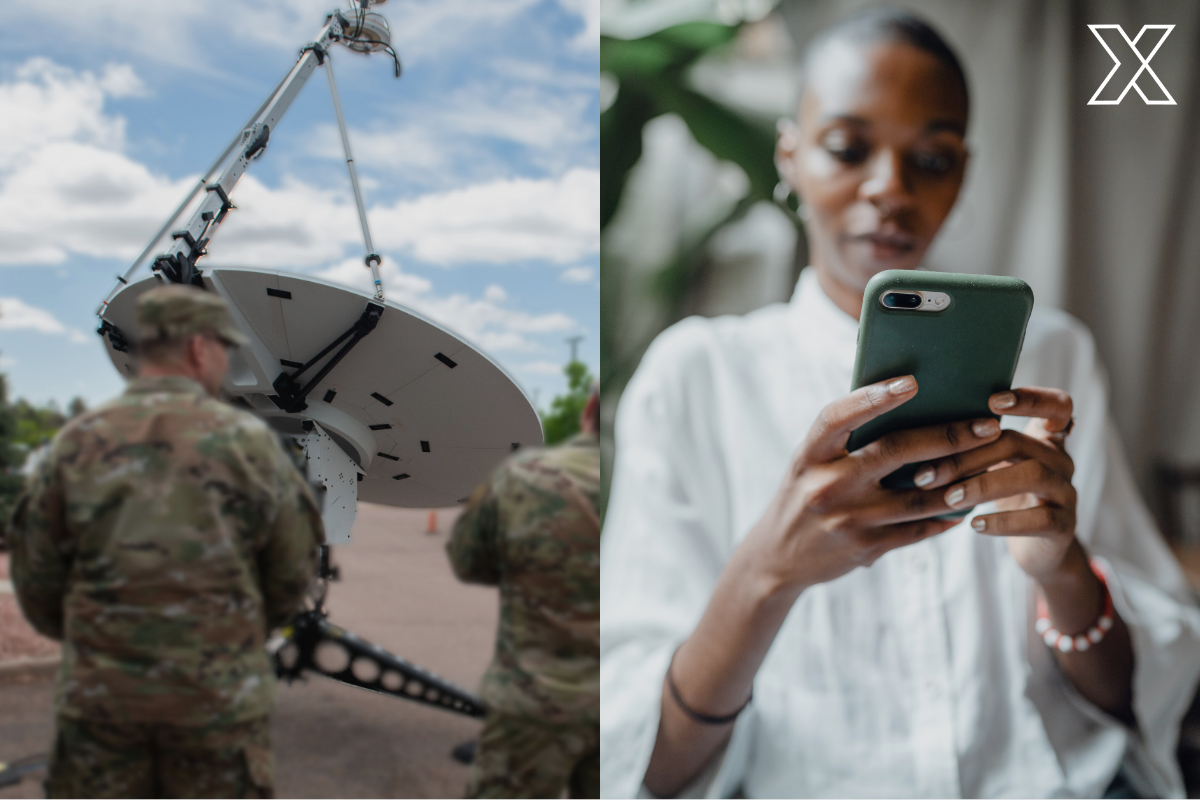Dual-Use Technology Applications in Defense Tech
April 16, 2025

The introduction of dual-use technology has been a critical component for developing our nation’s defenses. From AI to microelectronics to resilient space systems, dual-use is changing the landscape for how our military researches and develops new technology.
However, the strict guidelines of traditional government contracting make implementing new technologies difficult. This is why the Department of Defense (DoD) is turning to Other Transaction Authorities (OTAs) to cut through the red tape. Through dynamic programs like Strategic & Spectrum Missions Advanced Resilient Trusted Systems (S2MARTS), Microelectronics Commons, and Space Enterprise Consortium (SpEC), the DoD is building faster, smarter pathways to prototype cutting-edge capabilities—with fewer barriers and more impact.
Secretary Hegseth’s March 6 memo signals a push for rapid prototyping by promoting OTAs as the default method for technology procurement and expanding the Software Acquisition Pathway to accelerate delivery and enhance mission effectiveness.
What is Dual-Use Technology?
Technology is considered “dual-use” when it has been researched and developed for both commercial and defensive uses. Many of today’s technologies, such as computer-aided design, soldering, process control, drones, artificial intelligence and machine learning, are all dual-use. Sometimes, technology originates within the DoD and is found to have commercial applications, or conversely, commercially successful technology is adapted for defensive purposes.
While there are many dual-use technologies, the DoD can sometimes be limited by the requirements of military standards and specifications. Not all commercial companies may adhere to these strict guidelines; and therefore, purchase of technology for defensive use may be harder to obtain. This is why the DoD is teaming up with non-traditional contractors to develop new tech for both military and civilian use.

Post-Cold War Shifts Focus of Technology Research and Development
At the height of the Cold War, the majority of technology research and development was conducted by the federal government. However, the arms race for technological innovation uncovered a need for many of these technologies in the hands of civilians.
Emerging technologies like computer chips, communication devices, and GPS systems showed promise for enhancing everyday life. Eventually, these developments laid the groundwork for the technology like the computer chips in our consumer electronics, the GPS systems on our phones, and modern telecommunications.
Today’s technological ecosystem has shifted to the private sector taking over the role of innovator. Private companies are able to work faster and more efficiently, and they can even identify problems more effectively by monitoring technology’s use in civil applications. See how the automotive industry identified critical reliability issues in the microelectronics that power our vehicles.
The Role of Dual-Use Technology in the Prototype Development Process
Traditional government prototyping can be a painstakingly slow process. But with dual-technology and OTAs, the DoD can streamline the prototyping phase by using technology that is already being developed in private sectors.
Uses of technology can be translated from civilian applications to military needs by companies who have already tested these prototypes and have solved complex problems without the restrictions of the government. This can also help cut down on costs since these developments are already established, tested, have been through quality control, and can share research responsibilities.

S²MARTS: Accelerating Dual-Use Defense Prototypes
S²MARTS is an OTA dedicated to developing dual-use technology in microelectronics, strategic and spectrum missions, and other DoD critical mission areas. S²MARTS uses dual-use tech to support these areas and continue research for new opportunities for technology innovation.
Key Success Stories
On June 17, 2023, the MACH-TB program achieved a key milestone with the successful launch of its first suborbital testbed vehicle, marking significant progress in advancing U.S. hypersonic technology. Kratos, a key performer in the MACH-TB program, broke ground for a new facility in WestGate Academy and will be supporting this initiative along with others that support both commercial and government use.
The KANAGAWA project is focused on transforming optical input/output technologies by developing next-generation solutions that deliver exceptional data transfer speeds and improved performance for future computing systems. Through the combined expertise of Ayar Labs, Intel, Lockheed Martin ATL, and Qorvo, this collaborative initiative aims to push the boundaries of high-speed data communication and enable breakthrough advancements in system architecture.
Microelectronics Commons: Advancing Dual-Use Microelectronics
Microelectronics Commons is committed to creating a direct pathway to reduce microelectronic production in foreign countries and safeguard the nation from supply chain risks. Microelectronics Commons uses dual-use technology to accelerate the development and transition of commercial microelectronics into secure, defense-ready solutions.
Dual-Use Technologies Under Commons
Currently, Microelectronics Commons supports the research and development of the following dual-use technology areas:
- 5G/6G Technology
- Artificial Intelligence Hardware
- Commerical Leap-Ahead Technologies
- Electromagnetic Warfare
- Secure Edge/IoT Computing
- Quantum Technology
This playlist highlights the Microelectronics Commons Hubs who focus on many dual-use technology areas:
SpEC: Driving Dual-Use Innovation in Space
SpEC, bridges the cultural gap between military buyers, commercial space startups, and small businesses through OTA agreements. By working with commercial companies, SpEC helps the DoD utilize fast prototyping to further develop space technology.
Key Success Stories
In June of 2023, L3Harris was awarded the scope to develop a mission payload design to support the Missile Track Custody (MTC) program, through SpEC. The MTC program harnesses advanced sensors, data fusion, and cutting-edge analytics to improve the tracking and monitoring of potential missile threats, delivering a vital layer of defense for the nation and its allies.
Partner With NSTXL to Build the Future of National Security
Dual-use technology is rapidly changing the way that the government acquires new technology. With the ability to develop prototypes for both defensive and commercial use, cutting-edge technology can be adapted and implemented faster and more efficiently than ever.
If you want to contribute to the modernization of government technology, become an NSTXL member and join our mission to revolutionize government innovation. Or, you can partner with us by reaching out to our team!
About NSTXL
NSTXL is focused on building a network of innovators and creators across the most sought-after emerging technology fields. As an open-source platform, our approach was designed to encourage network growth and collaboration without stifling change. We support our network by providing commercial-term contracting, open-source technology discovery, modern-day marketing outreach, a strongly interconnected network for easy teaming and cybersecurity compliance support.





